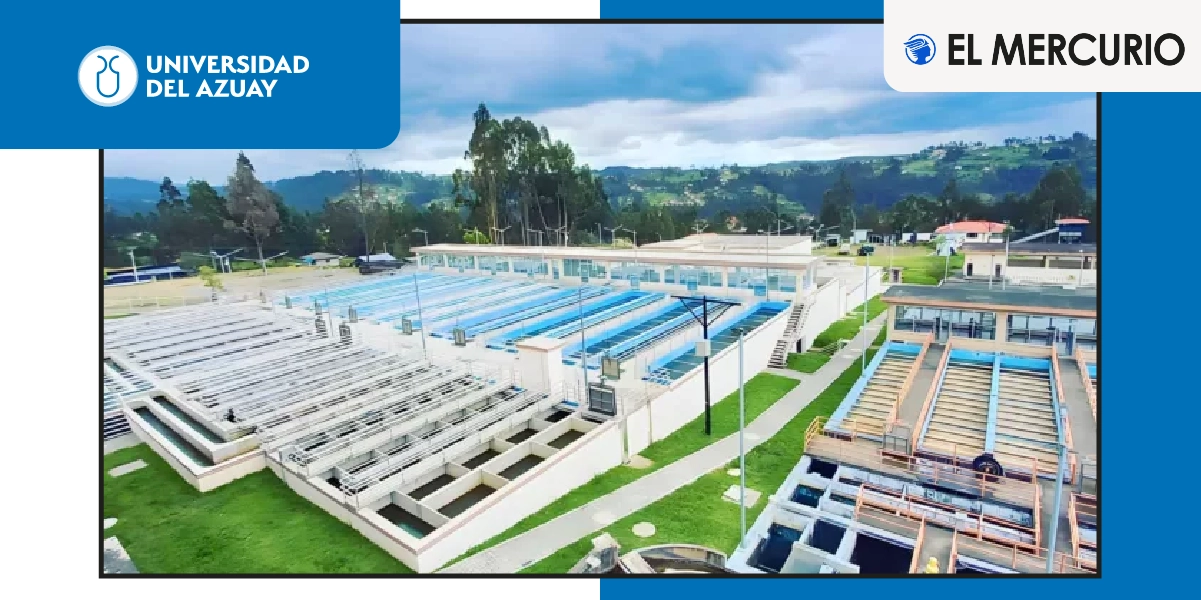Water management in the city of Cuenca

According to the United Nations, access to water, sanitation and hygiene is a human right; however, worldwide, 2400 billion people lack access to sanitation services such as toilets or latrines. Furthermore, more than 80% of wastewater from anthropogenic activities is discharged into water bodies without treatment, causing environmental pollution.
The city of Cuenca, from the 90s to the present day, can be considered privileged, since it has drinking water, sewage and sanitation of excellent quality within the reach of the vast majority of citizens, with service levels among the best in the world. country and region. This fact should make us evaluate the actions carried out as a city to reach these levels of quality, quantity and continuity of service, as well as the obligation that each of us has to protect the natural sources of this resource.
Much of the success of management as a city is due to the planning of the Municipal Telecommunications, Drinking Water and Sanitation Company of Cuenca, ETAPA EP; which, over the years, and despite changes in municipal authorities, has always had as its mission the proper care and management of the entire urban water cycle, from the care of water recharge areas, to returning the water in conditions appropriate to natural courses.
As a historical summary we can say that the I Phase of the Master Plan concluded in 1997, fundamentally served the metropolitan area of the city of Cuenca (Ordinance of 1983) within an area of 42 km2 through drinking water, sanitation and purification services. of wastewater.
The change in the Ordinances of 1998 and 2003 increased the urban area to 72 km2, and for the II Phase of the Master Plans of the city of Cuenca, executed for the most part between the years 2012-2015, it was included within the area. of service from “urban” systems to rural parish seats and areas considered to have immediate influence.
Works such as the expansion of the Tixán Plant, completed in 2019, to strengthen the city's drinking water system, as well as the network of more than 200 km of sanitary interceptors next to the city's rivers and streams, currently cover a drinking water and sanitation service area of more than 250 km2, that is, these services grew 5 times in 3 decades to supply a population of more than 500 thousand inhabitants.
However, despite all the actions carried out within the city of Cuenca, there are still many challenges ahead, since by the year 2050 it is estimated that the city of Cuenca will have just over one million inhabitants, so it will be necessary expand the capacity of the city's drinking water and sanitation systems, probably undertake campaigns to optimize per capita consumption and prepare to face the consequences that climate change will bring, especially on water sources in dry seasons, and natural drainage systems, and within the city, in rainy seasons, which requires comprehensive and collaborative actions that promote the conservation, protection and equitable distribution of this vital resource to ensure the sustainability and well-being of the city.
Another very important role for the peri-urban area of the city is played by community service providers, who have taken important steps to guarantee the quality of drinking water in their service areas.
The University of Azuay has been supporting systems such as the Nero Project, the Bath Board and several parish GADs so that they can invest in adequate infrastructure that meets health and safety standards. In addition, training programs have been carried out for the personnel in charge of maintaining the systems, in order to guarantee the efficient and safe operation of the facilities.
A major challenge is keeping costs reasonable for residents. This involves looking for solutions that are efficient in terms of energy consumption and the use of appropriate technologies that reduce operating expenses. Additionally, external financing options, such as grants or low-interest loans, can be explored to help cover startup costs or make system improvements.
Likewise, it is crucial to promote community participation and education about the responsible use of water. This can include awareness campaigns about the importance of drinking water and conservation practices, as well as promoting the early detection and repair of leaks, both in networks and in homes.
For this reason, the University of Azuay, through its training programs for both undergraduate and master's degrees, carries out linkage projects and research programs to strengthen important areas of management of water and sanitation systems for the benefit of public and community providers. since we all have the right to receive these basic services in the best technical and environmentally sustainable conditions.

